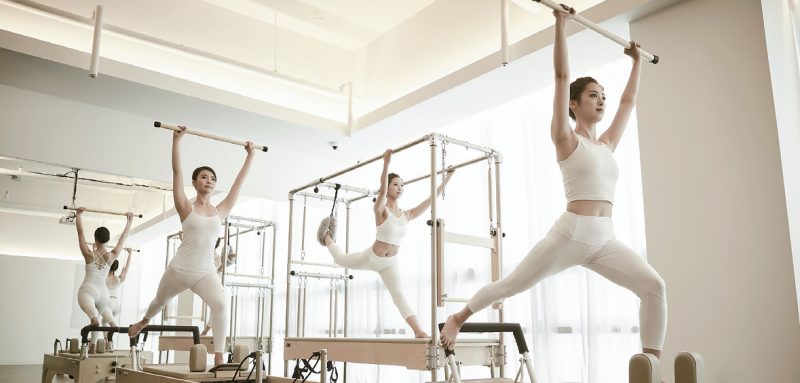Discovering Korean Pilates: A Unique Blend of Tradition and Modern Fitness
Korean Pilates is capturing the attention of fitness enthusiasts worldwide by blending the classic principles of Pilates with distinctive Korean wellness practices and cultural elements. This innovative approach offers a fresh perspective on mind-body exercise, combining the precision and core strength emphasis of Pilates with holistic Korean health concepts such as breath control, mindfulness, and flow. In this article, we will explore how Korean Pilates differs from traditional Pilates, its cultural roots, its benefits, and the reasons behind its rising popularity. By delving into these aspects, readers can appreciate why Korean Pilates is more than just a workout—it is a comprehensive practice that integrates physical fitness, mental clarity, and cultural richness.
The Foundations of Pilates and Their Korean Adaptation
Traditional Pilates focuses on core strength, flexibility, and controlled movement, emphasizing postural alignment and muscle engagement. Korean Pilates retains these fundamental principles but incorporates modifications influenced by Korean movement philosophy and healing traditions.
For instance, Korean Pilates often integrates slower, more meditative movement sequences inspired by traditional Korean martial arts and healing exercises. This adaptation encourages a deeper connection between body and breath, enhancing the mind-body awareness central to Pilates. Additionally, Korean Pilates instructors often emphasize “jeong,” a Korean concept of deep emotional connection and harmony, fostering a more intimate practice between instructor and student.
The Influence of Korean Breathwork and Mindfulness
Breathwork is significant in both Pilates and Korean wellness, but Korean Pilates places special emphasis on traditional Korean breathing methods such as Danjeon breathing, which focuses on the lower abdomen as a center of energy and vitality. This breathing technique strengthens the internal energy flow, or “ki,” which is believed to improve physical endurance and mental focus.
Incorporating these breath control techniques into Pilates movements creates a more meditative exercise experience, fostering not only physical health but also mental clarity and stress reduction. This mindfulness approach aligns perfectly with Korea’s holistic wellness traditions, making Korean Pilates a dynamic fusion of physical exercise and meditative practice.
Cultural Elements Shaping Korean Pilates Practice
Korean Pilates is deeply influenced by Korea’s cultural emphasis on balance, harmony, and longevity. Many studios integrate elements such as traditional Korean music, calming natural imagery, and even the use of herbal aromatherapy during sessions. These cultural layers enrich the Pilates experience, making it feel more immersive and restorative.
Moreover, Korean Pilates often incorporates group classes that foster community bonding, reflecting Korea’s collectivist culture. This social aspect not only motivates participants to maintain regular practice but also aligns with the cultural value placed on social harmony and mutual support.
Physical and Mental Benefits Unique to Korean Pilates
Practitioners of Korean Pilates report improvements beyond the typical Pilates benefits of core strength and posture. The added focus on breathwork and meditative flow enhances cardiovascular health, reduces anxiety, and promotes a balanced autonomic nervous system.
Physically, Korean Pilates emphasizes slow, deliberate movements that improve muscular endurance and joint mobility more gently than conventional Pilates, which can appeal to older adults or those recovering from injury. Mentally, the integration of Korean mindfulness fosters resilience against daily stressors and cultivates a more profound sense of well-being.
The Rising Popularity and Future of Korean Pilates
Korean Pilates is gaining momentum internationally as more people seek holistic fitness approaches that honor both body and mind. Its unique fusion of Korean cultural wisdom with Pilates principles fills a niche for those who value wellness as an integrated physical and spiritual practice.
As interest grows, we are witnessing the development of specialized training programs for instructors, and more studios offering Korean Pilates classes worldwide. This expanding trend suggests that Korean Pilates will continue evolving, potentially influencing the global wellness community and redefining modern exercise paradigms.
Embracing Korean Pilates as a Holistic Wellness Practice
Korean Pilates represents a thoughtful blend of traditional Pilates and Korea’s rich cultural heritage, encompassing physical exercise, mindful breathwork, and social connection. Its unique approach offers comprehensive benefits that strengthen not only the body but also the mind and spirit, making it a compelling choice for those seeking an integrated wellness journey.
By understanding Korean Pilates’ foundations, cultural significance, and holistic advantages, individuals can appreciate how this innovative practice transcends conventional workouts. It invites participants to cultivate balance, harmony, and deep wellness in a way that resonates with both ancient Korean philosophy and modern fitness needs, offering a path to lasting health and vitality.
